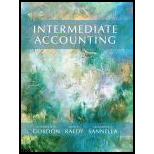
Concept explainers
Cognitive Bias. A team of accounting students is working on a case where they are required to assess a set of information to determine a company’s allowance for
The company’s allowance for bad debts has been 5% of its receivables for the last several years
This year, the company has strengthened its credit extension policy.
The average time that an
The economy has weakened over the year, with a pending recession.
Following is part of the discussion at their first team meeting. Analyze the discussion and determine the type of cognitive bias most consistent with the statements made by each student, providing an explanation for your answer.
Discussion
Tom initiated the discussion saying, “I have seen this kind of situation before when a company has to report a higher allowance than last year. Allowances are always increasing.”
Jennifer offered. “The first piece of information in the case is always the most important.
The bad debts have historically been 5%. Therefore, the allowance has to be 5%.”
Jake added, “As I look at the case, I keep coming back to the fact that the average time that an account receivable has been outstanding has increased by 10 days. In my view, this is the most important piece of information—the other facts don’t matter.”
Manna’s view was, “Even though the economy has deteriorated, the historical data is always more important. The general trends in the economy are not relevant.”
Want to see the full answer?
Check out a sample textbook solution
Chapter 3 Solutions
Intermediate Accounting
- Please provide the answer to this general accounting question with proper steps.arrow_forwardI need guidance in solving this financial accounting problem using standard procedures.arrow_forwardCan you show me the correct approach to solve this financial accounting problem using suitable standards?arrow_forward
- Lee Corporation had a Work-in-Process balance of $95,000 on January 1, 2023. The year-end balance of Work-in-Process was $110,000, and the Cost of Goods Manufactured was $680,000. Use this information to determine the total manufacturing costs incurred during the fiscal year 2023.arrow_forwardNovus Advisory Group expects its consultants to work 40,000 direct labor hours per year. The company's estimated total indirect costs are $360,000. The direct labor rate is $95 per hour. The company uses direct labor hours as the allocation base for indirect costs. If Novus performs a job requiring 30 hours of direct labor, what is the total job cost?arrow_forwardTONY Corporation makes a product whose direct labor standard are 1.3 hours per unit and $14 per hour. In April, the company produced 5,400 units using 7,440 direct labor hours. The actual direct labor cost was $97,550. The labor rate variance for April is _.arrow_forward
 Essentials of Business Analytics (MindTap Course ...StatisticsISBN:9781305627734Author:Jeffrey D. Camm, James J. Cochran, Michael J. Fry, Jeffrey W. Ohlmann, David R. AndersonPublisher:Cengage Learning
Essentials of Business Analytics (MindTap Course ...StatisticsISBN:9781305627734Author:Jeffrey D. Camm, James J. Cochran, Michael J. Fry, Jeffrey W. Ohlmann, David R. AndersonPublisher:Cengage Learning
